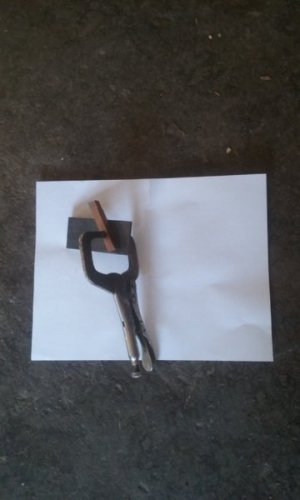- Joined
- Mar 29, 2017
- Messages
- 746
So- may I present the 'hillbilly' lathe repair/restoration. See the attached pic of one of my techniques. First, lets get some terminology straight- this lathe has 2 FLAT ways. The one closest to the operator is FRONT. The one farthest from the operator is BACK. That orientation will persist as I discuss the various FACETS of the ways.
As said before, this lathe was sloppy, to be kind, when I met it. In my 'hillbilly' attempt to address that, I entered into my very first attempt to SCRAPE any machine into something better.
The jig pictured is for the 'back' side of the BACK way. Addressing play in the 'x' direction, as the carriage moves along in the 'y' direction.
The jig built for addressing the 'z', vertical play in the carriage, has, regrettably, been repurposed, but is similar.
Meausurement of either axis involves a 6" caliper, a test indicator, carefull employment of gib adjustment, and a pantload of patience and observation. I will present further 'technique', loosely termed, very soon.

As said before, this lathe was sloppy, to be kind, when I met it. In my 'hillbilly' attempt to address that, I entered into my very first attempt to SCRAPE any machine into something better.
The jig pictured is for the 'back' side of the BACK way. Addressing play in the 'x' direction, as the carriage moves along in the 'y' direction.
The jig built for addressing the 'z', vertical play in the carriage, has, regrettably, been repurposed, but is similar.
Meausurement of either axis involves a 6" caliper, a test indicator, carefull employment of gib adjustment, and a pantload of patience and observation. I will present further 'technique', loosely termed, very soon.

